Are you a Quiet Speculation member?
If not, now is a perfect time to join up! Our powerful tools, breaking-news analysis, and exclusive Discord channel will make sure you stay up to date and ahead of the curve.
One weekend. Three events. So much data. With an SCG Open and two GPs this weekend, I can better evaluate whether the extreme trends seen in the Regionals data actually have weight, or were the outliers I speculated. Is Phoenix really as good as it looks?
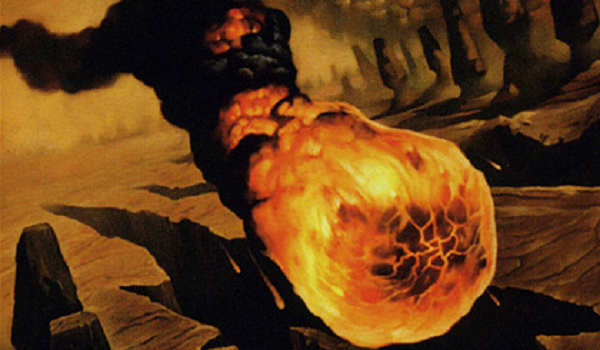
The Day 2 Picture
For unknown reasons, Channelfireball decided to report their Day 2 as percentages rather than the actual numbers. This wasn't a problem for Bilbao since the total population was included and I can do math. The same cannot be said for Tampa Bay. One way to meaningfully combine the data from the GPs with that from SCG Philadelphia is to convert the later into a percentage, then take the average.
| Deck Name | Average Day 2 % |
|---|---|
| Izzet Phoenix | 21.33 |
| Other | 11.77 |
| Humans | 7.97 |
| Dredge | 7.30 |
| Mono-Green Tron | 6.73 |
| Burn | 5.97 |
| Grixis Death's Shadow | 4.63 |
| Rock | 4.37 |
| UW Control | 4.27 |
| Affinity | 3.63 |
| RG Valakut | 3.10 |
| Whir Prison | 3.03 |
| Spirits | 2.7 |
| Ad Nauseam | 1.97 |
| Mono-Red Phoenix | 1.63 |
| Hardened Scales | 1.53 |
| Eldrazi Stompy | 1.53 |
| Sultai Reclamation | 1.00 |
| Blue Moon | 0.93 |
| Hollow One | 0.87 |
| Lantern Control | 0.57 |
| Amulet Titan | 0.57 |
| Jeskai Control | 0.43 |
| Jund | 0.43 |
While that is an impressive spread of decks making Modern, once again, there's a huge jump between Izzet Phoenix to the next individual result. 9.56 percentage points separate Phoenix from the aggregate Other category and it's 13.36 points ahead of Humans. That's not normal. It's also incredibly strange when taken as a whole.
Again, this is not a Tier 0 situation. Compared with Eye of Ugin's reign over Modern, there is less suppression of diversity; Izzet Phoenix is winning a lot, but it isn't winning everything. This metagame looks more like the Grixis Death's Shadow summer, where there was a very successful and powerful top deck, but diversity wasn't substantially affected.
Population Question
This Day 2 data may simply be a reflection of the Day 1 population. I've been told several times that every Day 1 for the past few months of premier level play has been heavily tilted towards Izzet Phoenix. Since Day 1 data almost never gets published, there's no way to verify that anecdotal claim, so take it as you will. But if it's true, and Izzet Phoenix starts out as the most-played deck by a significant margin, Phoenix has to end up as a major player on Day 2 and subsequently the Top 8. Only a complete collapse, likely due to the rest of the field playing predator decks, could prevent such a scenario.
The Top 8 Picture
Shrinking the data set, the Top 8 continues the trends from the Day 2 data. Again, this isn't surprising since to make Top 8, you have to Day 2 first. However, it is undeniable that Phoenix had a very good weekend. The narrative of it being the dominate deck should continue into the foreseeable future.
| Deck Name | Total # | Total % |
|---|---|---|
| Izzet Phoenix | 8 | 33.3% |
| Dredge | 4 | 16.7% |
| Amulet Titan | 2 | 8.3% |
| Mono-Green Tron | 2 | 8.3% |
| The Rock | 1 | 4.2% |
| Hollow One | 1 | 4.2% |
| Whir Prison | 1 | 4.2% |
| RG Valakut | 1 | 4.2% |
| Shadow Zoo | 1 | 4.2% |
| Grixis Death's Shadow | 1 | 4.2% |
| Bogles | 1 | 4.2% |
| Lantern Control | 1 | 4.2% |
Izzet Phoenix was again the most populous deck by far, and won every event. That is a very impressive weekend. I posited that Phoenix's absurd metagame population at Regionals had to be an outlier, but with another week of proportionately similar results, my opinion has shifted: the numbers now present what looks more like a recurring pattern. It's not a true statistical trend yet, but if the pattern repeats in Calgary, it will be hard to deny.
Dredge taking second place is interesting, but explainable. Most of the graveyard hate I'm seeing in the decklists are one-shot effects meant to catch binned Phoenixes rather than shut down Dredge. Dredge can survive one hate card, and Surgical Extraction is hardly heavy-duty to the extent Dredge demands. What I do like is that more and more decks are bringing in Anger of the Gods alongside the one-shot hate. Dredge wins by flooding the board quickly and then recurring its threats. Eliminating the graveyard once hurts, but only matters if it catches threats before they resurrect. Anger is the perfect answer to Dredge's actual gameplan.
The Catch
I don't know exactly how the finals of the GPs played out since it was all text coverage, but I did watch SCG Philadelphia. The way the final match unfolded renewed my skepticism of Phoenix's position. I 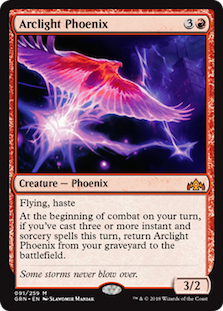 mean no offense to Austin Collins on his win, but he got very lucky in games 2 and 3 to win the Open. Game 2 saw Jonathan Orr fail to draw removal spells in an otherwise strong position and die to double Thing in the Ice // Awoken Horror. Game 3, Orr was mana screwed against what was close to a nut draw from Collins. Game 1, where both decks were playing closer to their average draws, Orr won handily.
mean no offense to Austin Collins on his win, but he got very lucky in games 2 and 3 to win the Open. Game 2 saw Jonathan Orr fail to draw removal spells in an otherwise strong position and die to double Thing in the Ice // Awoken Horror. Game 3, Orr was mana screwed against what was close to a nut draw from Collins. Game 1, where both decks were playing closer to their average draws, Orr won handily.
This is the big catch with Phoenix's numbers: it needs to get lucky. I've discussed the deck at length before, but the deck is disguising some significant weaknesses by playing lots of cantrips. If it weren't for all the velocity, particularly Manamorphose, Izzet Phoenix wouldn't be a deck. Phoenix decks can keep more mediocre hands because they can just cantrip into a busted hand; Izzet Phoenix's average draw is nothing special, but it doesn't have to actually play that hand.
Healthily Warped?
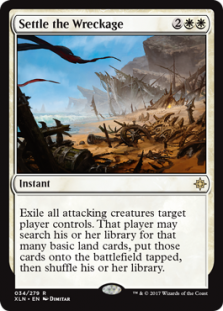 The other problem I have with declaring Phoenix the Best Deck is the wider context. There's been a clear trend in the data towards Arclight Phoenix. This week also had a huge surge of Dredge decks. However, looking past those two, the format remains diverse. Plenty of non-Phoenix decks are doing well, and there's already evidence that players are adjusting and pushing back. It just isn't happening quickly enough to have an impact yet.
The other problem I have with declaring Phoenix the Best Deck is the wider context. There's been a clear trend in the data towards Arclight Phoenix. This week also had a huge surge of Dredge decks. However, looking past those two, the format remains diverse. Plenty of non-Phoenix decks are doing well, and there's already evidence that players are adjusting and pushing back. It just isn't happening quickly enough to have an impact yet.
The 9th place UW Control deck from Philadelphia had a Circle of Protection: Red in its sideboard, but was running Supreme Verdict maindeck. Verdict was good in a Humans-heavy world, but these days, with Dredge and Phoenix everywhere, UW should consider Settle the Wreckage. The metagame is out-pacing the players. Once they catch up, I can't imagine that Phoenix's share can be maintained.
Putting it Together
On the surface, the data looks like a disaster, but digging deeper indicates that the format itself is perfectly healthy. Izzet Phoenix may have an inordinate share of big event data, but underneath that everything looks normal. I argue that Modern itself is fine even if the tournament scene is not. The lingering question is whether that is good enough.
Implications
Players have been calling for a Faithless Looting ban for a long time now. While Wizards wants to wait and see if Modern self-corrects, especially since Modern Horizons is coming, if this data keeps piling up, they're going to be pushed into taking action. I don't think Looting is the problem (it's Manamorphose), but I also don't think that Wizards is willing to risk Dredge resurging if Phoenix goes away. I hold that a ban is not necessary; Phoenix is not just beatable, but containable. But the metagame may not adjust fast enough to prevent a banning.
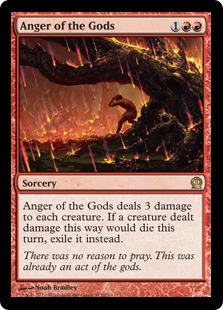 However, even if that does come to pass, it won't be for some time. It is critical for players to recognize the reality that Izzet Phoenix is everywhere at the big events and prepare accordingly. This may require players to switch decks to utilize maindeck hate cards, but I don't think that's necessary. Small changes, both in playstyle and sideboarding, can prove very effective.
However, even if that does come to pass, it won't be for some time. It is critical for players to recognize the reality that Izzet Phoenix is everywhere at the big events and prepare accordingly. This may require players to switch decks to utilize maindeck hate cards, but I don't think that's necessary. Small changes, both in playstyle and sideboarding, can prove very effective.
If you're a deck that's vulnerable to Thing in the Ice // Awoken Horror's tempo tsunami, deploy threats accordingly, pacing removal judiciously. If you have the option, adjust your removal package to favor exile over destroy. I would never recommend maindeck Surgical Extraction outside of Phoenix decks because even when it's hypothetically good, it's prohibitively narrow, but Remorseful Cleric or similar maindeckable cards are excellent at stopping the dangerous Arclight Blitz.
A Classic Counterpoint
While Phoenix dominates high-level events, we don't know if it does the entire metagame. Numbers from smaller/less-publicized events show the Phoenix domination getting less obvious, to say the least; take the results from online events like Modern Challenges or Leagues. Its appearance and win rate are roughly the same as that of any other deck.
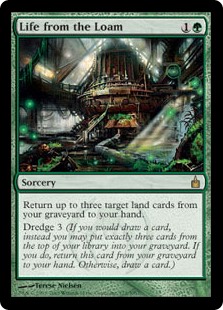 The same holds for smaller paper events. The Modern Classic Top 16 at SCG Philidelphia only had two Izzet and one Mono-Red Phoenix. The closest any Phoenix deck came to the title was sixth place. The Syracuse Classic didn't feature a single Arclight Phoenix over fourteen unique decks. When considering this year's events, Phoenix is on top of MTGGoldfish's metagame thanks its numerous big results from premier tournaments; Dredge would be level otherwise.
The same holds for smaller paper events. The Modern Classic Top 16 at SCG Philidelphia only had two Izzet and one Mono-Red Phoenix. The closest any Phoenix deck came to the title was sixth place. The Syracuse Classic didn't feature a single Arclight Phoenix over fourteen unique decks. When considering this year's events, Phoenix is on top of MTGGoldfish's metagame thanks its numerous big results from premier tournaments; Dredge would be level otherwise.
If the apparent warp weakens and/or disappears outside of larger SCG and Wizards events, then it appears to only exist at these large events. If this really were an Eldrazi Winter or even Grixis Death's Shadow's reign, I'd expect to see far more Izzet Phoenix at the smaller events. The metagame suggested by the overall statistics and SCG Classics speaks to a very diverse metagame, especially in comparison to the premier events. To the best of my knowledge, this dichotomy has never happened in a constructed Magic format, let alone in Modern.
Is It Real?
I'd need more data to verify this split. If the Challenges and smaller Modern events continue to be as diverse as they've been so far, that lends credence to my observation. If it is an actual effect and not just a quirk, I can think of two reasons for it existing. The first possibility is that the paper metagame is ahead of the online one, and Izzet Phoenix really is that good. This seems unlikely since MTGO has so many more events every day that it should work out the metagame and find the solutions to any metagame warp.
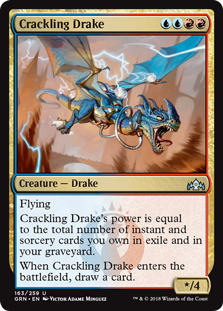 The second, and I think more likely, probability is that perception and the nature of the events is at work. Arclight Phoenix gets a lot of attention. If the narrative is that one deck is so much better than any other, and you're not that invested in the format, why not pick up the "best deck," especially if you already have the critical pieces? Again, Phoenix is in Standard, and in a pretty similar deck at that. Why even switch to something else?
The second, and I think more likely, probability is that perception and the nature of the events is at work. Arclight Phoenix gets a lot of attention. If the narrative is that one deck is so much better than any other, and you're not that invested in the format, why not pick up the "best deck," especially if you already have the critical pieces? Again, Phoenix is in Standard, and in a pretty similar deck at that. Why even switch to something else?
The other problem is, frankly, laziness. For someone not particularly invested in a format as many semi-to-actual-pros are, it's much easier to join 'em than to try and beat 'em. Given that the premier events are open tournaments, it makes sense for an inordinate number of less-invested players to just jam Phoenix. They don't have the time or willingness to figure out the right cards and strategy to beat the top deck, and if it's as accessible as Phoenix, why not save yourself some time and effort? The more invested players are likely to stick to their guns, and I suspect are the ones playing in smaller events at all. In this scenario, it's less a metagame break than different player composition.
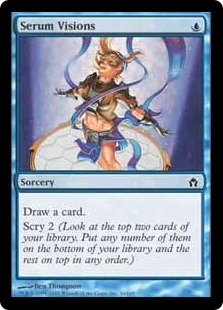 Looking Ahead
Looking Ahead
I hope that the current pattern of Izzet Phoenix domination doesn't hold. We've seen the deck constantly over the past few months, and I for one am bored of watching Phoenix decks spin their wheels into a win. If the risk of the London Mulligan supercharging Dredge, Phoenix, and other combo decks pans out, it could be the worst Pro Tour since Oath of the Gatewatch. However, I am also optimistic that this won't happen. Izzet Phoenix is very beatable if players actually put their minds to the job. There are more GPs and an SCG Open before London. Hopefully players will find the answer and implement it before then.




Might oheonix also be easier to play than many other decks? KCI aas hands down the best deck while it was around, but very difficult to play. Pheonix seems like it’s easy to play since the player just constantly draws Into more cards and is removal and counter light. The easier a deck is, the easier it is for people to pick up.
I’ve argued that about specific cards in the past, and it almost certainly applies to decks as well.
While drawing lots of cards forgives a multitude of misplays, I don’t know if it applies in this case. Izzet Phoenix is great while it’s ahead, but struggles when behind. Knowing what to do when something goes wrong is critical for a deck as full of air as Phoenix is. You may be right, and it seems highly plausible, but I really don’t know if it’s true.
Me neither. I just think pheonix is very forgiving for misplays. However. That is a part of the decks beauty and power.
Agreed on manamorphose being the problem, in the Phoenix decks it’s basically probe, except instead of paying 2 life, you have to put in 2 Mana to start it
I dont even think manamorphose is bad. Without a way to bin pheonix, manamorphose generally just controls into more cantrips or thing